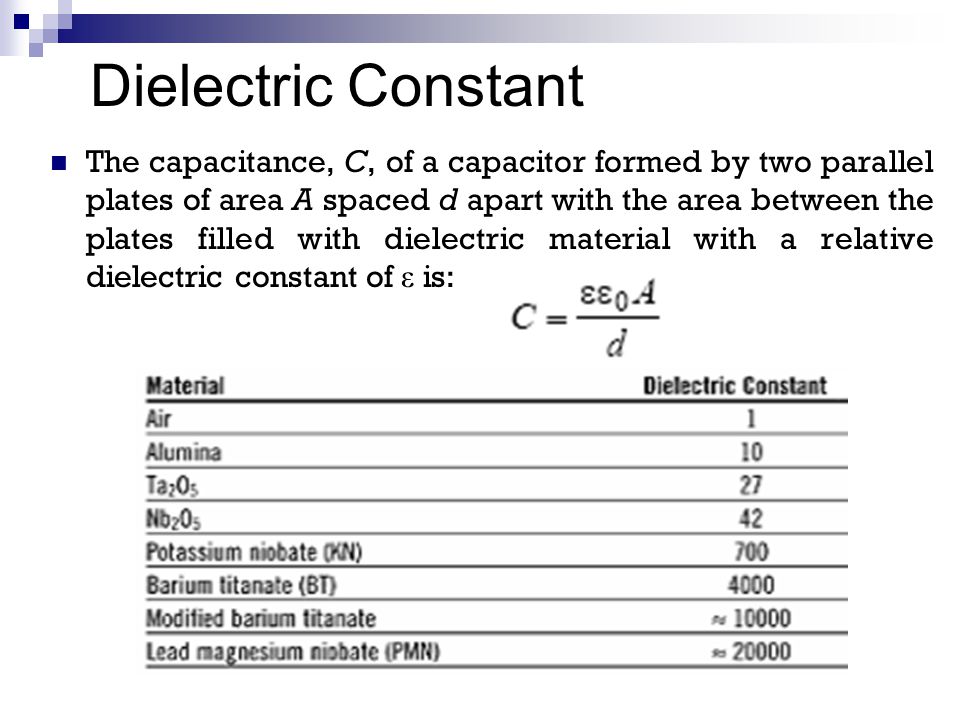The relative dielectric constant k is the ratio of the amount of charge that an element constructed from the ceramic material can store relative to the absolute dielectric constant 0 the charge that can be stored by the same electrodes when separated by a vacuum at equal voltage 0 8 85 x 10 12 farad meter.
Ceramics constant k.
6 cheap shielded cables are often made with this stuff but these are only suitable for audio frequencies or low rate data communications.
Usually they are metal oxides that is compounds of metallic elements and oxygen but many ceramics.
The more resin the lower the k.
Measurements are generally carried out at 1 khz.
Ceramic composition and properties atomic and molecular nature of ceramic materials and their resulting characteristics and performance in industrial applications.
The loss factor represents the ratio of resistance to reactance of a parallel equivalent circuit of the ceramic element figure 3.
At present the thermal conductivity of the prepared beo ceramics can reach 280 w m k which is 10 times higher than that of aluminum oxide al2o3 ceramics.
We have collected a number of charts detailing applications and properties for some of the most commonly used ceramic materials.
Industrial ceramics are commonly understood to be all industrially used materials that are inorganic nonmetallic solids.
Beryllium oxide is widely used in aerospace nuclear power metallurgical engineering electronics industry rocket manufacturing and so on.
The dielectric constant k and loss factor tan d can be measured using a standard impedance bridge or an impedance analyzer both of which provide a direct reading.










